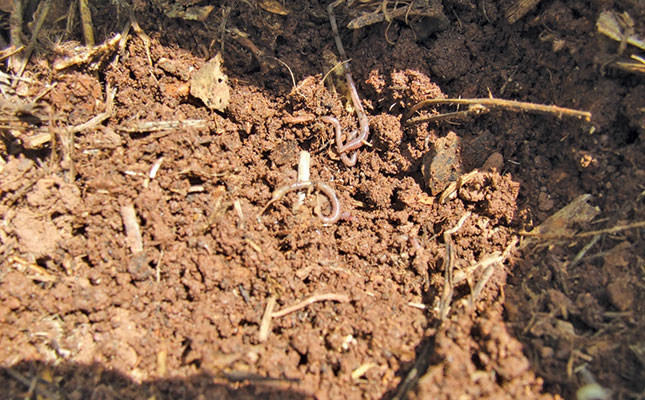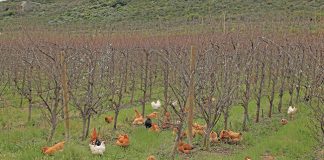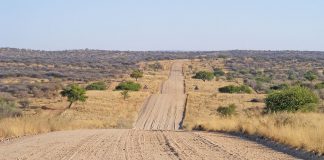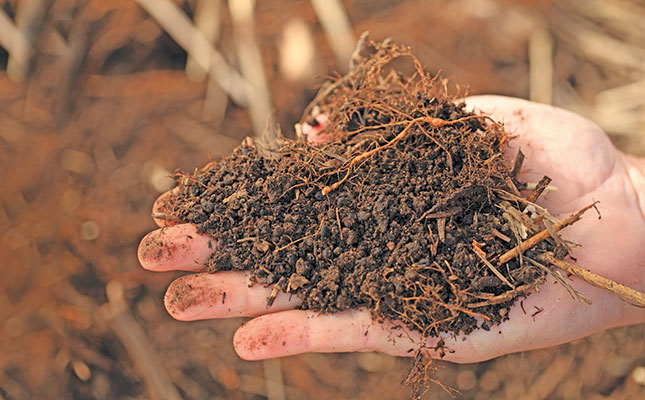
Photo: Bill Kerr
The soil also holds more water; in fact, no-till soils generally show drought stress two weeks later than tilled soils do.
There is, however, one important requirement for no-till farming: you need to grow a legume in rotation on the land. Soya bean is usually the preferred option.
The reason for this is that a leguminous crop such as soya bean captures nitrogen (N). Without it, there would not be enough N to maximise the conversion of carbon (C) in the crop residue to humus.
You can have tons of crop residue, but if there isn’t enough N in the soil, the residue will simply evaporate as carbon dioxide.
One ton of crop residue contains about 400kg of C, of which 140kg can be converted to humus. The balance is lost to the atmosphere through metabolism of the soil microbes.
Humus contains 50% C, with a C:N ratio of about 10:1. This means that 140kg of C can produce 280kg of humus, and requires 14kg of N to do so.
Wheat residue has a C:N ratio of 80:1, so there are only 5kg N in 1t of this residue with which to form humus. Because of this shortfall of 9kg of N, 1t of residue will make only 100kg of humus. That’s a shortfall of 180kg of humus per ton of residue.
No-till vs tillage
No-till can work well for small-scale vegetable farmers growing a range of crops; I’ve been doing it for 18 years and have never looked back.
Large-scale vegetable farmers who till their lands should realise that every tillage operation reduces the soil carbon. The land may appear neat, clean, and professional, but it has been damaged, and this can only be seen with a microscope and tests.
To make the point, agronomists often show a slide at presentations of a tractor pulling an implement with flames rising from the implement to illustrate that the carbon is being burnt out of the soil.
Every soil disturbance needs to be fully justifiable. Disturb the soil as little as possible when planting the crop; don’t think that deeper and more vigorous cultivation will benefit the root system. It does the opposite, by scrambling the natural soil structure.
This slows down water penetration and, after rain or irrigation, interferes with the soil’s oxygen levels. This, in turn, favours pathogens rather than beneficial microbes.
Resistance
A client told me that a fellow farmer had benefitted from deep-ripping his lands and he intended following suit.
I brought him my soil probe, and we found that it penetrated 1,8m deep with little resistance. This showed him that ripping would be of no benefit to his land; it would simply cause damage and waste money. If there had been a hard layer in the land, it would have been a different story.
Bill Kerr is a vegetable specialist and a breeder of a range of vegetables.













